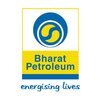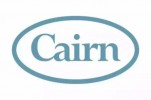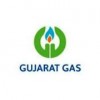Filter interviews by
Gujarat Gas Quality Analyst Interview Questions and Answers
Be the first one to contribute and help others!
Interview questions from similar companies

(1 Question)
- Q1. Basic java coding

I appeared for an interview in Feb 2025, where I was asked the following questions.
- Q1. Explain your test automation framework.
- Ans.
My test automation framework is a modular, scalable solution that enhances testing efficiency and reliability across applications.
Utilizes Selenium WebDriver for browser automation, allowing for cross-browser testing.
Incorporates TestNG for test management, enabling parallel execution and detailed reporting.
Employs Page Object Model (POM) design pattern to enhance code reusability and maintainability.
Integrates with CI...
- Q2. OOPS concept used in your framework, explain with an example.
- Ans.
OOP concepts like encapsulation and inheritance enhance test automation frameworks for better maintainability and scalability.
Encapsulation: Wrapping data and methods in classes. Example: A 'TestCase' class that contains test steps and results.
Inheritance: Creating a base class for common functionalities. Example: 'BaseTest' class that other test classes extend.
Polymorphism: Using a single interface for different data ...
- Q3. What is RTM?
- Ans.
RTM stands for Requirements Traceability Matrix, a tool used to ensure all requirements are met in software development.
RTM links requirements to their corresponding test cases, ensuring coverage.
It helps in tracking changes in requirements throughout the project lifecycle.
Example: If a requirement changes, RTM shows which test cases need updates.
RTM aids in identifying gaps in testing and ensures all requirements are
- Q4. Difference between static and dynamic binding in java
- Ans.
Static binding occurs at compile time, while dynamic binding happens at runtime in Java.
Static binding is resolved during compile time, e.g., method overloading.
Dynamic binding is resolved during runtime, e.g., method overriding.
Static binding is faster as it doesn't involve runtime overhead.
Dynamic binding allows for polymorphism, enabling flexible code behavior.
- Q5. What is an abstract class and interface in java
- Ans.
Abstract classes and interfaces are key concepts in Java for defining abstract types and enforcing contracts for classes.
An abstract class can have both abstract methods (without implementation) and concrete methods (with implementation).
An interface can only have abstract methods (prior to Java 8) and default methods (from Java 8 onwards).
A class can extend only one abstract class but can implement multiple interfaces...
- Q6. Selenium code for generate stale element reference exception
- Q7. Selenium script for fetch data from table using index
- Q8. SQL queries, (Highest value, joining columns)
- Q9. What are the Git commands
- Ans.
Git commands are essential for version control, enabling collaboration and tracking changes in code repositories.
git init: Initializes a new Git repository in the current directory.
git clone <repository>: Creates a local copy of a remote repository.
git add <file>: Stages changes to be committed.
git commit -m 'message': Records the staged changes with a descriptive message.
git push: Uploads local commits to ...
- Q10. Put and patch method difference
- Ans.
PUT replaces a resource, while PATCH updates a resource partially.
PUT is idempotent; multiple identical requests have the same effect as a single request.
PATCH is not necessarily idempotent; repeated requests may yield different results.
Example of PUT: Updating a user's profile by sending the entire profile data.
Example of PATCH: Updating just the user's email address without affecting other fields.
- Q11. Syntax for taking screenshot
- Ans.
Taking a screenshot in automation testing captures the current state of the application for verification.
In Selenium WebDriver, use: driver.getScreenshotAs(OutputType.FILE);
For saving the screenshot: FileUtils.copyFile(screenshot, new File('path/to/save/screenshot.png'));
In Python with Selenium: driver.save_screenshot('screenshot.png')
In JavaScript with Puppeteer: await page.screenshot({ path: 'screenshot.png' });
- Q12. How to handle failed scenarios in your framework
- Ans.
Implementing robust handling for failed scenarios ensures reliability and aids in debugging within a QA framework.
Use logging to capture detailed error messages and stack traces for failed tests.
Implement retry logic for flaky tests to reduce false negatives. For example, retry a network call up to three times.
Categorize failures into critical and non-critical to prioritize fixes. Critical failures halt the pipeline, w...

(2 Questions)
- Q1. Project related details
- Q2. Problem facing regarding project
- Ans.
The main problem facing the project is the lack of clear communication between team members.
Lack of clear communication leading to misunderstandings and delays
Team members not sharing important information with each other
Difficulty in coordinating tasks and aligning goals
Possible solutions include regular team meetings, clear communication channels, and project management tools

I applied via Walk-in and was interviewed in Dec 2021. There were 2 interview rounds.

Discuss about your work
Interview Preparation Tips
Thank you

(2 Questions)
- Q1. How long would you abord
- Q2. What is your expectation for salaray
Interview Preparation Tips

I appeared for an interview in Sep 2024, where I was asked the following questions.
- Q1. What is your career plan
- Ans.
I aim to grow as a skilled engineer, focusing on innovation, leadership, and contributing to impactful projects in my field.
Pursue advanced certifications in my engineering discipline, such as PMP or Six Sigma.
Gain experience in diverse projects, like renewable energy systems or smart technology.
Aim for leadership roles, such as project manager or team lead, to enhance my management skills.
Stay updated with industry tr...
- Q2. Leadership skills

I applied via Walk-in
Interview Questionnaire
10 Questions
- Q1. Lubricants related questions
- Q2. Meaning of meneral oil
- Ans.
Mineral oil is a clear, colorless, odorless, and tasteless oil derived from petroleum.
Mineral oil is commonly used in cosmetics, pharmaceuticals, and as a lubricant.
It is often used as a laxative to relieve constipation.
Mineral oil can also be found in baby oil and various skincare products.
It is important to note that mineral oil should not be ingested in large quantities as it can cause health issues.
- Q3. 5w30 pcmo oil questions
- Q4. Lubricants fired experience
- Ans.
I have 5 years of experience in selling lubricants to industrial clients, achieving 20% growth in sales each year.
Developed strong relationships with key clients in the industrial sector
Identified and pursued new business opportunities in the lubricants market
Provided technical expertise and support to clients in selecting the right lubricants for their needs
Consistently met or exceeded sales targets through effective
- Q5. Lubricants related questions
- Q6. Working of Lubricants
- Ans.
Lubricants are substances used to reduce friction between surfaces in mutual contact, which ultimately reduces the heat generated when the surfaces move.
Lubricants can be in the form of oils, greases, or solid lubricants.
They are used in various industries such as automotive, manufacturing, and aerospace.
Lubricants help to extend the lifespan of machinery by reducing wear and tear on moving parts.
They also help to impr...
- Q7. Different mco pcmo and cvo Lubricants
- Ans.
MCO, PCMO, and CVO lubricants are different types of lubricants used in various industries for different purposes.
MCO stands for Marine Cylinder Oil, used in marine engines to reduce friction and wear.
PCMO stands for Passenger Car Motor Oil, used in automotive engines to lubricate moving parts and reduce heat.
CVO stands for Commercial Vehicle Oil, used in heavy-duty vehicles like trucks and buses to provide lubrication
- Q8. Lubricants questions
- Q9. Different of Lubricants 20w40 10w30
- Ans.
Lubricants 20w40 and 10w30 differ in their viscosity grades, with 20w40 being thicker and better suited for high temperatures.
20w40 has a higher viscosity grade compared to 10w30
10w30 is thinner and flows more easily in cold temperatures
20w40 is better suited for high temperature environments
10w30 may provide better fuel economy due to lower viscosity
- Q10. Different of Lubricants 15w40 5w30
- Ans.
15w40 and 5w30 are different types of lubricants used in vehicles, with varying viscosity and temperature ranges.
15w40 has a higher viscosity compared to 5w30
5w30 is better suited for colder temperatures due to its lower viscosity
15w40 is commonly used in diesel engines while 5w30 is used in gasoline engines

Assistant Manager Interview Questions & Answers
Indian Oil Corporationposted on 26 Dec 2021
I appeared for an interview before Dec 2020.
Interview Questionnaire
2 Questions
- Q1. Basic questions testing your technical skills
- Q2. Be confident with your answers
Interview Preparation Tips

I applied via Recruitment Consultant and was interviewed before Apr 2020. There were 3 interview rounds.
Interview Questionnaire
1 Question
- Q1. Process related
Interview Preparation Tips

I appeared for an interview in Apr 2017.
Interview Questionnaire
3 Questions
- Q1. Favourite sportsperson
- Ans.
My favourite sportsperson is Serena Williams.
Serena Williams is a professional tennis player
She has won numerous Grand Slam titles
She is known for her powerful serve and aggressive playing style
- Q2. How is crude oil separated from water?
- Ans.
Crude oil is separated from water through a process called oil-water separation.
Oil-water separation is achieved by using various techniques such as gravity separation, centrifugation, and filtration.
Gravity separation involves allowing the mixture of crude oil and water to settle, with the oil rising to the top due to its lower density.
Centrifugation utilizes the centrifugal force to separate the oil and water by spin...
- Q3. Questions about memberships in student societies and activities.
Interview Preparation Tips
Experience: On the basis of CGPA
Round: Technical + HR Interview
Experience: I was extremely nervous as this was going to be my first interview as a fresher. Adding to that, their first question was ' who is your favourite basket ball player?' as my CV mentioned that I used to play basketball in school-life. I just didn't know whether I should blabber an arbitrary name or give the honest answer. After giving the latter I was asked how crude oil is seperated from water. I told them that if some time is allowed then crude oil and water will be separated in two layers. Now I dont know why it seemed to me that crude oil having asphalts, coke should have greater specific gravity than water and should appear at bottom. After giving the answer, from their expressions I knew that I had screwed this as well. Now they asked some more teasing questions like why I had joined IIChE, how many meeting I had attended and so on and I don't remember the rest as I was close to tears by then.
Tips: At the end, one of the panelists gently told me 'Please don't be so much nervous from next time'.
College Name: Jadavpur University, Kolkata
Tell us how to improve this page.
Gujarat Gas Interviews By Designations
- Gujarat Gas Engineer Interview Questions
- Gujarat Gas Management Trainee Interview Questions
- Gujarat Gas Senior Engineer Interview Questions
- Gujarat Gas Senior Inspection Engineer Interview Questions
- Gujarat Gas Maintenance Engineer Interview Questions
- Gujarat Gas Graduate Trainee Interview Questions
- Gujarat Gas Operator Interview Questions
- Gujarat Gas Graduate Apprentice Interview Questions
- Show more
Interview Questions for Popular Designations
- Quality Engineer Interview Questions
- Quality Inspector Interview Questions
- Senior Quality Engineer Interview Questions
- Quality Assurance/Quality Control Manager Interview Questions
- Quality Controller Interview Questions
- Quality Assurance Interview Questions
- Quality Manager Interview Questions
- Quality Executive Interview Questions
- Show more
Interview Questions from Similar Companies
Fast track your campus placements
|
Senior Engineer
62
salaries
| ₹5.7 L/yr - ₹16.4 L/yr |
|
Deputy Manager
40
salaries
| ₹13 L/yr - ₹24.5 L/yr |
|
Senior Officer
34
salaries
| ₹5.2 L/yr - ₹18 L/yr |
|
Engineer
33
salaries
| ₹2.5 L/yr - ₹9.3 L/yr |
|
Executive
30
salaries
| ₹1.6 L/yr - ₹7 L/yr |

Indian Oil Corporation

Bharat Petroleum

GAIL

Petrofac
- Home >
- Interviews >
- Gujarat Gas Interview Questions >
- Gujarat Gas Quality Analyst Interview Questions











